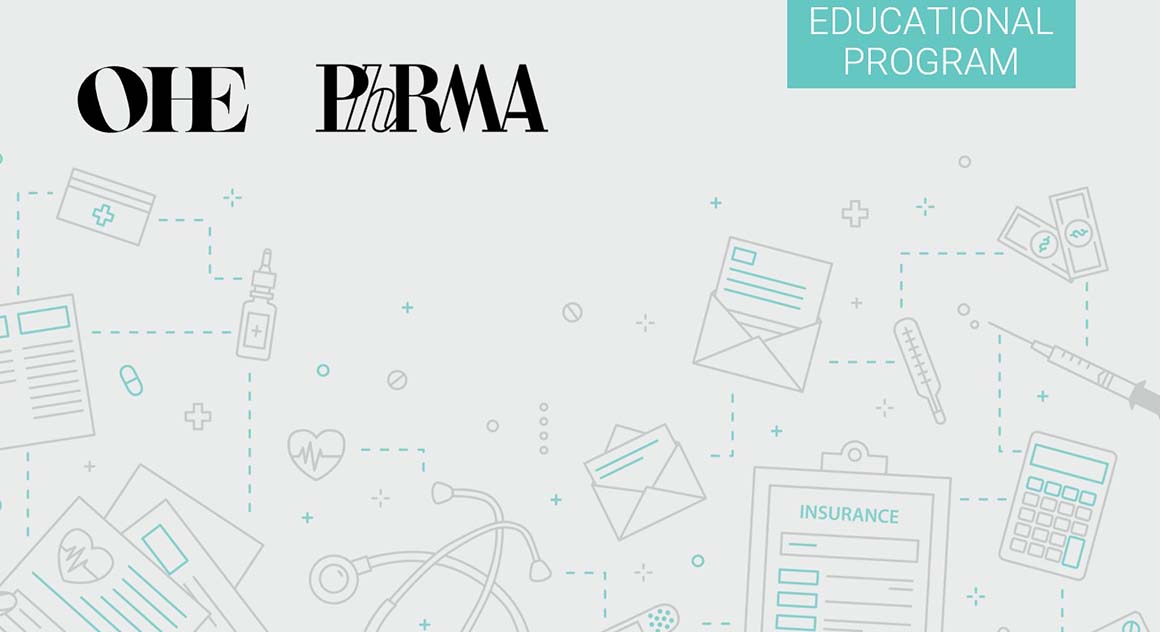Sign up to our newsletter Subscribe
Analysing Global Immunisation Expenditure

Sign up to our newsletter Subscribe


Members of the OHE team participated in a number of sessions at ISPOR’s 13th Annual European Congress in November. This post summarizes the contributions of Prof Nancy Devlin, OHE’s Director of Research. Nancy Devlin Members of the OHE…

Members of the OHE team participated in a number of sessions at ISPOR’s 13th Annual European Congress in November. This post summarizes the contributions of Prof Nancy Devlin, OHE’s Director of Research.
Members of the OHE team participated in a number of sessions at ISPOR’s 13th Annual European Congress in November. This post summarizes the contributions of Prof Nancy Devlin, OHE’s Director of Research.
NICE’s cost effectiveness threshold revisited: new evidence on the influence of cost effectiveness and other factors on NICE decisions
This podium presentation reported on research currently being undertaken by a team comprising Nancy Devlin and Phill O’Neill (OHE), Helen Dakin (Oxford University), Nigel Rice (University of York) and David Parkin (NHS South East Coast). The aims of the research are to investigate the influence of cost effectiveness and other factors on NICE decisions and whether NICE’s threshold has changed over time.
The HTAinSite database and additional data from public NICE documents provide the basis for analysing NICE’s decisions over the past decade. Each of decisions is characterised as a ‘yes’ or a ‘no’, i.e., a recommendation for or against use of a health care technology for a specific patient group. Logistic regression determines the extent to which these decisions can be explained by: (1) the clinical and economic evidence regarding that technology, (2) the characteristics of the patient population, disease or treatment, and (3) contextual factors affecting the conduct of technology appraisal.
Initial results suggest that, first, cost effectiveness alone explains most of NICE’s decisions included in the study, correctly classifying 84% of them. Few other variables proved significant: alternative ways of modelling NICE decisions led to very small variations in the model’s performance. The study also suggests that NICE’s threshold has not changed over time and that cancer treatments have been significantly more likely to be recommended.
This research is a work in progress, with current results based on a sub-set of NICE decisions. A paper reporting the results in full will be discussed at the Health Economics Study Group conference at the University of York in January 2011. Analysis continues on a larger data set, with results expected to be reported early in 2011.
The value of a QALY: is there a single threshold or does context matter?
Nancy Devlin took part in a panel discussion on this topic. Her presentation focussed on the topic in relation to NICE decision making, including the criteria other than cost effectiveness that NICE uses in decision making and how NICE says it uses these criteria in relation to its cost effectiveness threshold range. A lack of clarity exists about how multiple criteria are applied and it was noted that evidence on NHS opportunity costs that could inform the selection of the threshold is lacking. Further, attaching higher weight to QALYs gained by some groups can only be achieved, within a fixed budget, by according lower priority to others.
Modern methods of utility measurement
Nancy Devlin of OHE and Paul Krabbe from the University Medical Centre, Groningen, The Netherlands, presented a workshop that discussed a range of new methods for the valuation of health related quality of life.
Prof Devlin’s presentation focussed on new approaches to the Time Trade Off (TTO) method, including Lead Time-TTO, which overcome some of the problems with conventional approaches to TTO. A new study[1] suggests that the lead time approach works well in capturing preferences of most people, even for poor health states. At the same time, however, very long lead times appeared to have little advantage and the choice of the lead time for a given health state may affect the TTO values for that state.
The workshop concluded with a preview of new, web-based valuation technologies being developed by the EuroQol Group and currently being tested for use in valuing EQ-5D-5L. This incorporates discrete choice, visual analogue scale and LT-TTO valuation methods.
[1] N Devlin et al., A comparison of alternative variants of the lead and lag time TTO. OHE Research Paper forthcoming
An error has occurred, please try again later.
This website uses cookies so that we can provide you with the best user experience possible. Cookie information is stored in your browser and performs functions such as recognising you when you return to our website and helping our team to understand which sections of the website you find most interesting and useful.
Strictly Necessary Cookie should be enabled at all times so that we can save your preferences for cookie settings.
If you disable this cookie, we will not be able to save your preferences. This means that every time you visit this website you will need to enable or disable cookies again.
This website uses Google Analytics to collect anonymous information such as the number of visitors to the site, and the most popular pages.
Keeping this cookie enabled helps us to improve our website.
Please enable Strictly Necessary Cookies first so that we can save your preferences!
